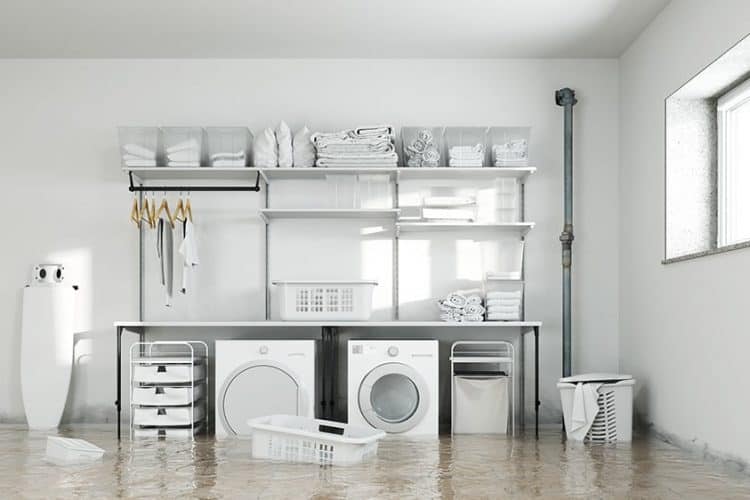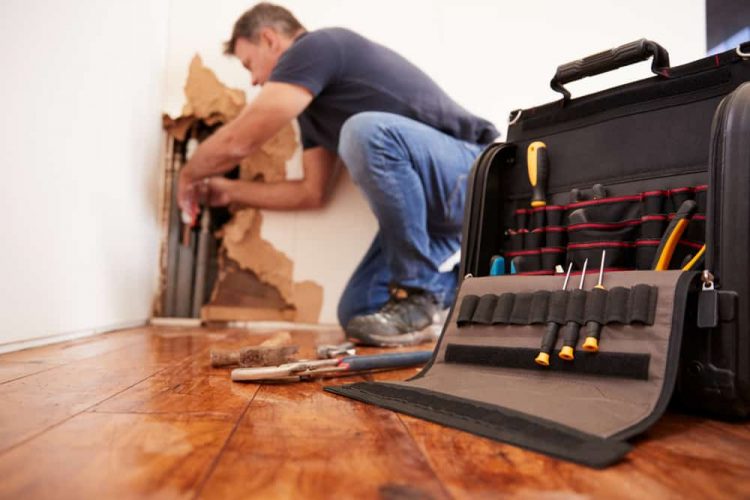Wood Floor Water Damage: What to Do & How to Repair
Water can damage a lot of things in your home, including hardwood floors. Wood is porous and even when hardwood floors are waxed and treated, there can still be water under floorboards and even the subfloors that will cause havoc with hardwood floors. Even though wood naturally expands and contracts, water damage is not a normally occurring situation.
If you have hardwood floors and have recently experienced water damage, here are some things to consider when deciding if your floors can be saved or if they should be replaced.
Assessing Your Wood Floor Water Damage
Dry your floor as quickly as possible to reduce the amount of permanent damage. Remove any wet or damp rugs or carpets and soak up as much surface water as possible using mops and rags. Use a wet vacuum and focus on the seams between the floorboards. Avoid using heaters to dry out the wood; instead, use a dehumidifier to trap any moisture, but it is more important to call a water remediation company like 1-800 Water Damage immediately to come and assess the situation. The restoration company uses special meters and technology including sometimes thermal imaging cameras to determine how extensive the water damage is in the wood floor. The longer you wait to call in a professional the more damage can occur.
Hardwood floor water damage is going to show up in one of three ways: warped/cupped floorboards, discolored floorboards, or mold and mildew growth.
Warping Floorboards
Hardwood absorbs water, which causes it to expand and push against other floorboards resulting in warping or cupping. High temperatures and high humidity can also cause warping to occur. When floorboards warp, dirt and other objects get trapped in between the warping gaps as well. While there is some natural expansion and retraction in natural fiber flooring, warping or cupping is too severe to return to a flat surface. Once the floorboards have become warped, in most cases they will need to be replaced.
Water Stain or Discoloration
When wood absorbs water and then dries, or when water is left unattended on hardwood floors and eventually evaporates, it will leave discolored patches. The minerals and salts in the wood react with the water to create stains. Stained hardwood floors may be able to be refinished to repair hardwood floor water damage spots, or planks can be replaced if refinishing is not possible.
You can sand solid hardwood flooring several times to restore the finish if the condition of the floor is solid. When water damage is mostly superficial, refinishing is an option. With more severe damage, replacement may be a better decision. A water damage professional can offer an assessment of your hardwood floors to help you make the best decision.
Mold and Mildew Growth
When there is water under the hardwood floor, it can lead to the establishment of mold and mildew. The challenge here is that you will not likely notice the mold and mildew right away. It can be one of those issues that shows up a few days later.
You may see black spots of mold or spots of white furry mold, and you will most likely notice a musty smell coming from your floor if mold has been established. The room can feel damp. If you notice this after repairing a hardwood floor water damage spot, you may not have been able to get all the water out of the floorboards. Also, what you are seeing or smelling could be indicative of a more rampant mold issue under the floorboards and potentially the subfloor. You should call a professional mold remediation service at this point.
When to Call in the Experts
Hardwood floors represent a significant investment in your home. If you inherited the hardwood floors, knowing your options in a water damage situation can save you money. When water damage restoration professionals assess the damaged floors, you will know which action to take immediately – clean, dry the wood floors, refinish, or replace. Alternatively, when you decide on your own to refinish the floors and then find out that mold has established beneath the floorboards and possibly the subfloors, you will then have to pay for mold remediation or replacement of the flooring.
An expert assessment offers many advantages and money-saving options when it comes to a wood floor water damage situation. You should use it to your benefit.
1-800 WATER DAMAGE Can Help
Time is a critical factor in a water damage situation. Mold may develop within 24-48 hours of water damage, and when it comes to hardwood floors, water can seep through cracks and crevices of the wood floor. Unfortunately, that dark, damp location under the floorboard is the perfect habitat for mold growth. The sooner you know what you’re dealing with, the more options you have for your hardwood floors.
1-800 WATER DAMAGE professionals have helped thousands of homeowners make smart decisions when it comes to how to treat water-damaged hardwood floors. We are a resource for you in any kind of water damage or mold remediation situation, and we are available 24 hours a day, 7 days a week.
Connect with us online or call 1-800-928-3732.



